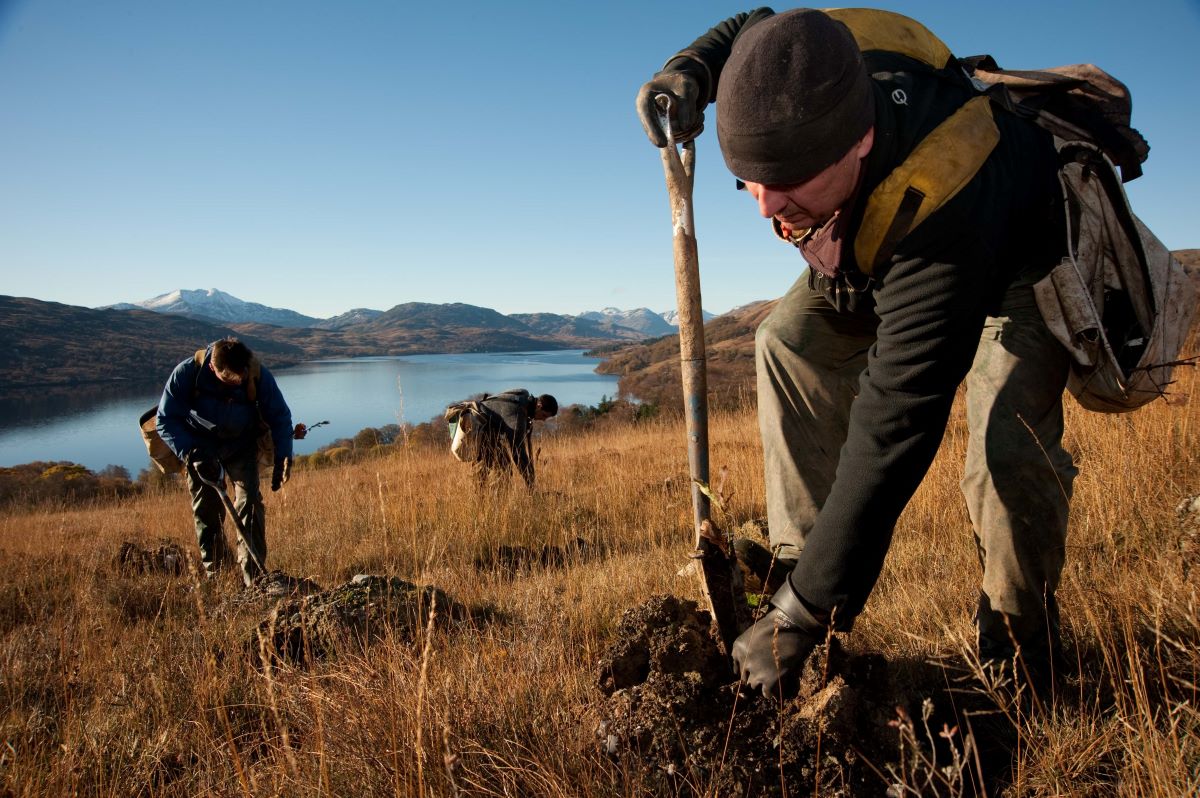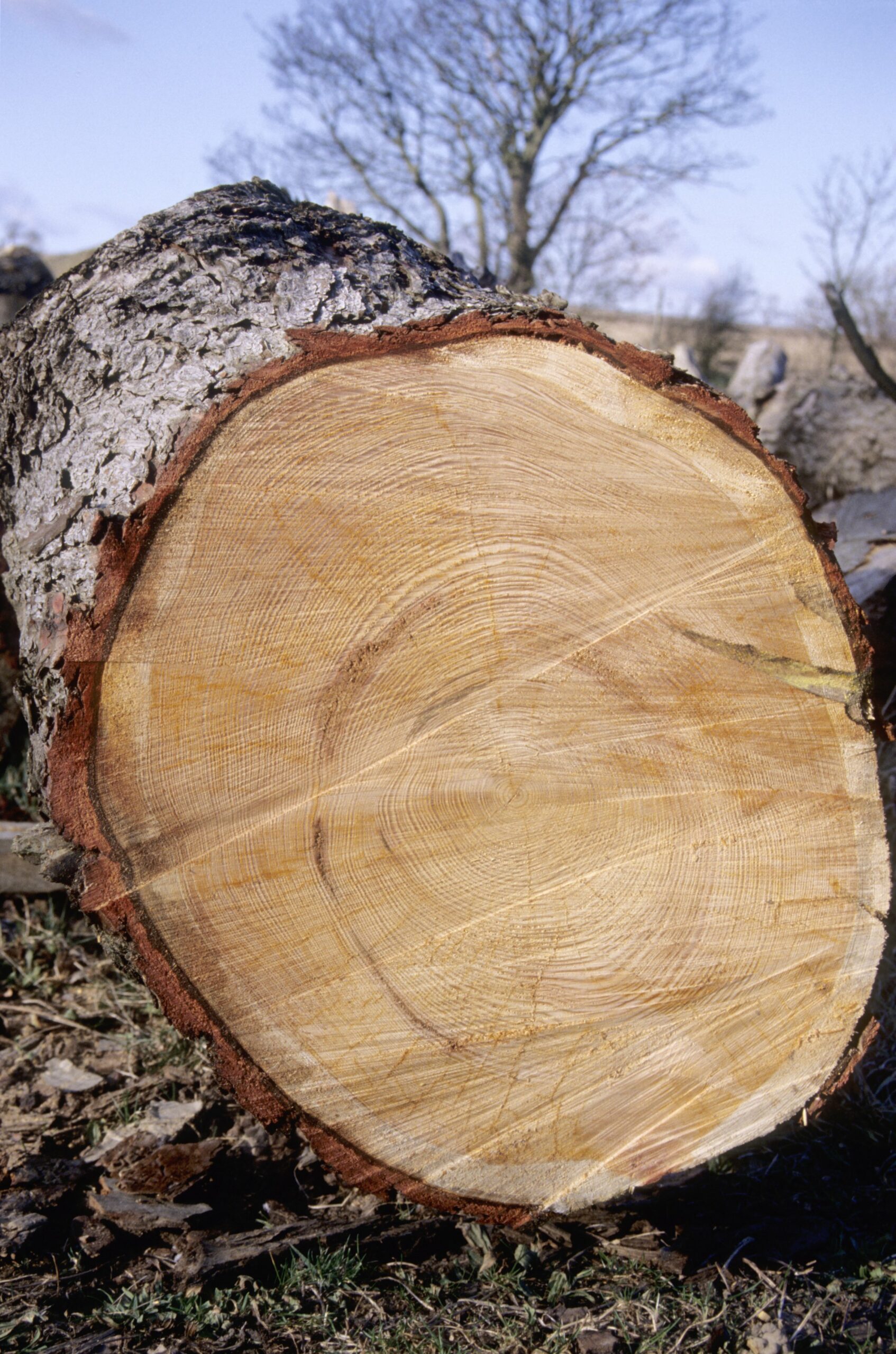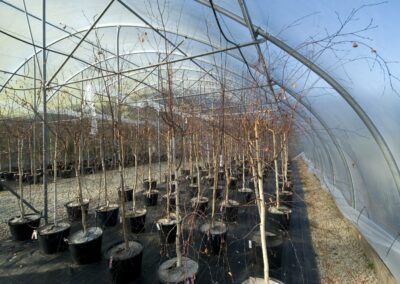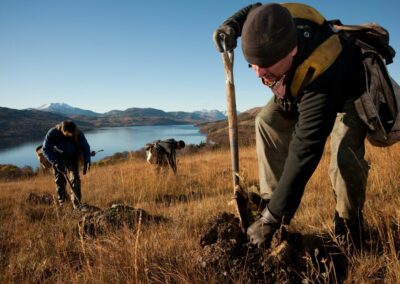Applying dendrochronology for genomic resilience
Project leads Dr James Borrell | Royal Botanic Gardens, Kew; Dr Tom Ovenden; Dr Suzanne Robinson | Forest Research
Lead organisation Forest Research; Royal Botanic Gardens, Kew
Collaborator UK Centre for Ecology and Hydrology (UKCEH)
Project status Active
Project funding 25-26 £257,786
Research outcomes Reducing the risk | Adaptation
Context
To support the UK’s expanding national afforestation programme, stakeholders require better tools to predict which tree genotypes will perform well under current and future climates.
UK forestry and woodland management has traditionally applied a “local is best” approach, by sourcing seeds and saplings close to targeted afforestation sites. However, this strategy is likely to be severely disrupted in the coming decades as bioclimatic zones shift, and local tree populations potentially become less well adapted.
This project uses dendrochronology and genomics to enable us to see how tree DNA interacts with environmental conditions.
Research aims and objectives
Aim:
Begin to predict how different tree genotypes will respond across a range of climate conditions by combining tree ring data with a full genome sequence across hundreds of individual trees.
Objectives:
Method development
- Use year-to-year growth and climate data to identify which climatic conditions UK tree populations are best adapted to and use this data to more precisely estimate how well their genetics match future climates, including extreme weather events.
Method validation
- Exploit the long-term growth-climate record in tree ring traits to train a model using data from 1900-90, and test it using data from 1990-2024, to see if genomic offset estimates can accurately predict important traits for forestry under today’s warmer climate (about 1.5°C higher).
Delivering impact
Apply these tools to:
- examine whether young woodlands are struggling to adapt (building on a previous project: Evaluating genetic and environmental bottlenecks in planted and naturally colonised woodlands – Centre for Forest Protection),
- create maps showing the best seed sources for future climates to help stakeholders,
- estimate the environmental and economic benefits of using the best tree genotypes.
Expected outcomes
This project will help show the value of planting the ‘right tree in the right place’ in growth, economics, and carbon terms. Methods will be improved to measure local adaptation and the effects of extreme weather events. The impact of climate change on tree growth will be studied using tree ring data, and practical examples will be provided to show how these tools can support stakeholders, as described below.
These tools are specifically applicable in the UK, where climate impacts are already being felt, and there is an urgent need to identify the tree types suited for future climate conditions.
Collaboration with stakeholders will:
- Identify seed zones and gene flow strategies prepared for future climates to inform future policies.
- Predict the performance of newly planted and naturally regenerating woodlands compared to mature forests.
- Estimate the benefits of selecting optimal tree genotypes by comparing growth responses of well-adapted individuals versus poorly adapted ones.
- Increase confidence in genomic tools through robust validation, linking results to growth and carbon outcomes for both industry and restoration.
Further resources linked to this project
CFP Phase 1 Project (2022-2025)
See previous research on this topic from CFP Phase 1 project: Evaluating genetic and environmental bottlenecks in planted and naturally colonised woodlands.
CFP Intern - Vedika (2025-2026)
Find out how intern Vedika is supporting this project throughout her sixth-month Centre for Forest Protection internship (Oct 25 – Mar 26):
Vedika – Combining dendrochronology and genomics to understand genomic resilience in English oak
Title image: Crown copyright. Forestry Commission
Body image: Crown Copyright. Forestry Commission – Isobel Cameron
Glossary & Key Terms
Afforestation
The process of establishing a forest in an area where there was no previous tree cover/forest before (or not for a long time).
Bioclimatic zones
Regions defined by climate and natural vegetation.
Dendrochronology
Dendrochronology, also known as tree ring analysis, is the scientific method of dating based on the analysis of patterns of tree rings. These rings, formed annually, reflect variations in climate and environmental conditions during the tree’s lifespan, providing a record of past events and allowing for the precise dating of wood samples.
Gene flow strategies
Planned approaches for managing how genetic material (i.e. genes) moves between tree populations, especially through seed and pollen dispersal, to enhance the adaptability and resilience of forests under climate change.
Genome sequence
The complete DNA blueprint of individual trees, which is used to understand how genetic variation influences tree growth, resilience, and adaptation to environmental conditions, especially under climate change.
Genomics
The study of an organism’s complete set of DNA, including all of its genes, and how that DNA interacts within the organism and with its environment.
Genomic offset estimates
A predictive measure of how well a tree’s genetic makeup (its genotype) matches the environmental conditions it is likely to face in the future, especially under climate change.
Genotype
The set of genes that influence how a tree grows and interacts with its environment.
Seed zones
Geographically defined areas where tree populations have adapted to specific local environmental conditions, such as climate, soil, and elevation, and where seeds or saplings can be sourced for planting with a high likelihood of successful growth.
Share this project on social media
Related Projects
Our Partners
Social media
Explore
Newsletter
Contact
© 2022 Centre for Forest Protection. All rights reserved.



